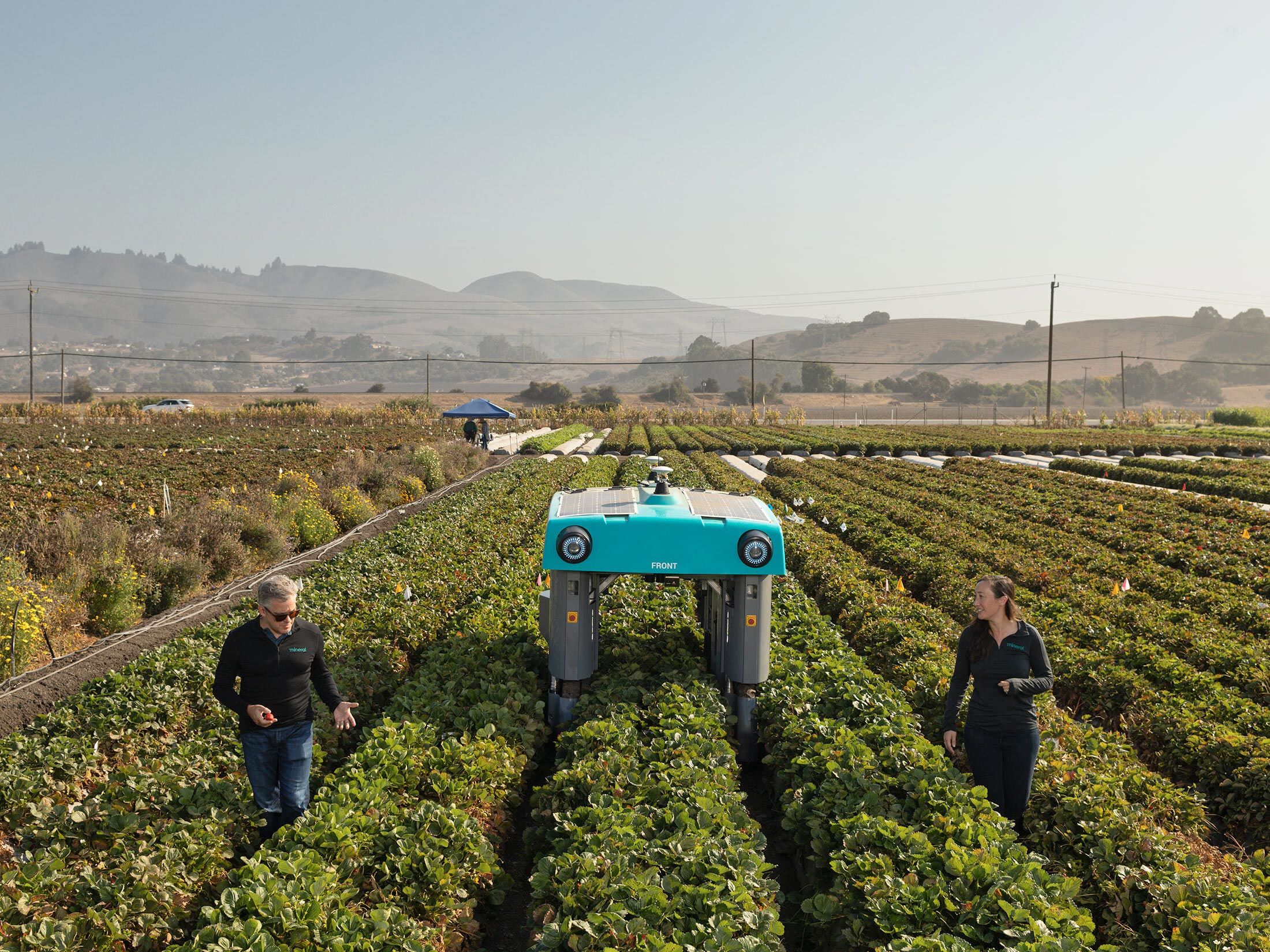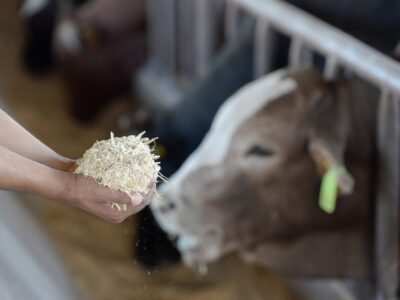(Bloomberg Businessweek) —
When Deb Menicos walks a strawberry field, she doesn’t just look at the berries. Menicos, who holds a Ph.D. in plant breeding from Ohio State University and works as a senior scientist at Driscoll’s Inc., will often find herself counting leaves and examining the small stalks protruding from the base of the plant. These parts, known as trusses, are important because they’re where the flowers and berries grow. “We want a small plant, with compact leaves and trusses poking out—not too long, because we don’t want them to touch the dirt,” she says.
Developing a new berry variety at Driscoll’s takes at least five years. It begins with a crop of 25,000 genetically distinct plants that grow in the company’s breeding field near its headquarters in Watsonville, California. Menicos and her colleagues winnow that down first to 250 plants, then clone them and replant them, narrowing the field until they have a winner.
The goal is to make the most and tastiest berries while minimizing the cost of fertilizers, pesticides and labor. Today, determining which genetic attributes translate into the easiest plants to harvest comes down to “observations and feelings,” Menicos says. “We want to have better data, more quantitative data. And that’s where Mineral comes in.”
Mineral is another way of saying Google. The closely guarded project grew out of an effort by the company’s famous innovation lab, X, to use cameras and machine learning to help farmers make better decisions. Working with Driscoll’s, Mineral created large unmanned rovers—the vehicles are a little bigger than a Smart car and are packed with sensors and cameras—that drive up and down crop rows collecting data that tell farmers which plants are thriving and which aren’t.
This is known as “phenotyping,” and it’s a huge challenge for farmers, says Elliott Grant, Mineral’s general manager. “The price of genetic modeling went down to pretty much nothing, but you still don’t know what the plant does when you engineer it,” he says. “Breeders and crop researchers are still going into the fields with tape measures and notepads.”
Mineral’s original rover involved a camera attached to a cart with four bicycle wheels, which the company’s engineers began pushing around the fields outside Watsonville in 2017. The cameras were hooked into software similar to the kind Google uses for its self-driving car program, Waymo. The current version has all-terrain wheels and a half-dozen cameras that take pictures of plants from different angles, plus laser sensors and GPS to keep it from bumping into obstacles. It’s driven by a Mineral technician who uses a remote control; ultimately the company thinks its rovers will direct themselves. Mineral is also testing sensors that can be attached to conventional farm tractors, and ways to augment that data using images from drones, satellites and even smartphones.
Besides at Driscoll’s, Google is testing versions of its agricultural technology with more than a dozen other companies including Syngenta, the Chinese state-owned agricultural giant that develops seeds, insecticides and herbicides for staples such as soybeans, corn and wheat. Syngenta has been using Mineral’s rovers to develop algorithms to identify palmer amaranth—a weed that can devastate entire farms if it takes hold. Eventually, this could allow Syngenta’s customers to do more targeted applications of herbicide instead of spraying entire fields. “After an hour you’re like, ‘I can’t look at another wheat plant,’” Grant says. “But the rover will count every single grain. There’s no way for a human breeder to do that.”
Grant acknowledges that this isn’t the kind of thing most people associate with Google or X. The lab rose to prominence for developing technology that seemed ripped from the pages of science fiction books. Besides the self-driving car, there was Glass (a face-mounted computer), Loon (which used helium balloons to provide network connectivity), Wing (package delivery by drone), Makani (flying wind turbines) and Verily (a medical company that initially developed contact lenses with embedded computers). None has quite panned out. Glass flopped with consumers, Wing has been confined to a handful of pilot projects, and Loon and Makani have folded. Verily has raised billions from outside investors, but has set aside the contact lens project in favor of more pedestrian applications with clearer business models, such as improving medical databases.
X’s top executive, Astro Teller, says the idea for X has been to move beyond flashy innovations that don’t necessarily make good businesses to more meaningful endeavors that generate revenue and—in the long run—profit for parent company Alphabet Inc. Mineral hasn’t settled on a business model yet, but Teller, whose official title is “captain of moonshots,” expects one to come, at which point the company could be spun off, like Waymo and Verily. “Maybe on the surface, it doesn’t look as bright and shiny,” he says. On the other hand, a machine that’s really good at counting strawberry leaves is pretty impressive to clients who, like Driscoll’s, are in the strawberry leaf-counting business.
Read next: How Apple Stores Went From Geek Paradise to Union Front Line
(Corrects the type of balloon in paragraph 8)
To contact the author of this story:
Max Chafkin in New York at mchafkin@bloomberg.net
© 2022 Bloomberg L.P.





